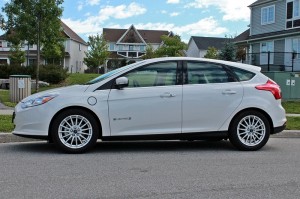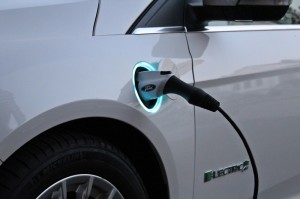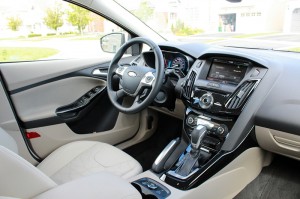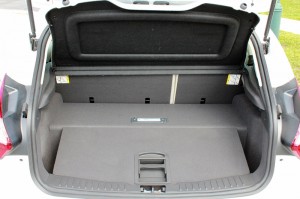 As automakers continue to press on ahead with the development of electric vehicles into their line-ups, we are now beginning to see situations where they are rolling out electrified versions of existing models instead of launching EV models that are unique unto themselves.
As automakers continue to press on ahead with the development of electric vehicles into their line-ups, we are now beginning to see situations where they are rolling out electrified versions of existing models instead of launching EV models that are unique unto themselves.
There are obvious advantages for the automaker with this strategy. There are far fewer developmental costs involved in modifying an existing model than there would be in developing a model from scratch. In addition, the risk of over-supply can be minimized since inventories can be easily adjusted simply by scheduling more or less EV’s into the production line as demand warrants.
However it needs to be said that there are disadvantages to making an EV fit into a non-EV exclusive design as well, and ultimately the success or lack thereof of the EV version of an existing model will be determined by whether the advantages outweigh the disadvantages or vice versa.
The Ford Motor Company is one of the first to bring out a fully electric, zero emission version of an existing vehicle with the launch of the 2013 Ford Focus EV. I had a chance to review the non-EV version of the Ford Focus in a previous Enviro Dad Test Drive, so my familiarity with the vehicle was already quite high. As such I was very interested to see how the modified and electrified version compared to the favourable impressions I had with the original Focus that I reviewed.
AT FIRST GLANCE
 The moment you look at the Ford Focus EV, you can’t help but be struck by the fact that it looks almost completely identical to the regular Ford Focus 5-door. From Ford’s POV, that’s exactly the point! While some purchasers of electric vehicles want to stand out, and thus want to drive a car that is completely unique, others want to make the right choice but don’t need to stand out when doing so.
The moment you look at the Ford Focus EV, you can’t help but be struck by the fact that it looks almost completely identical to the regular Ford Focus 5-door. From Ford’s POV, that’s exactly the point! While some purchasers of electric vehicles want to stand out, and thus want to drive a car that is completely unique, others want to make the right choice but don’t need to stand out when doing so.
There are 2 main differences from a design point of view on the exterior of the Focus EV. Where the fuel door normally sits is a charging port that’s encircled with a blue LED light that illuninates when being charged. The other is less obvious but perhaps more significant – there is no tailpipe. With no combustion engine and no emissions, the Focus EV doesn’t need a tailpipe so don’t go looking for one.
BEHIND THE WHEEL
Not only does the Ford Focus EV look like any regular Ford Focus 5-door, but for the most part it also drives like one too. This is perhaps equally, if not more significant to the success of this vehicle – and all EV’s in general. While many people are receptive to zero emission vehicles, most are also unwilling to sacrifice driving enjoyment to do so. EV’s, with very few exceptions drive just like regular combustion engine cars do and those who drive the Focus EV will have a hard time finding any drawbacks or deficiencies in performance.
 An EV is silent, save for a slight hum that comes from the battery that propels the car so that will take getting used to. I allowed a neighbour to get behind the wheel with me for a tour around the block and he was stunned at just how similar it was to driving his Mazda 3, which is only a good thing for EV designers everywhere.
An EV is silent, save for a slight hum that comes from the battery that propels the car so that will take getting used to. I allowed a neighbour to get behind the wheel with me for a tour around the block and he was stunned at just how similar it was to driving his Mazda 3, which is only a good thing for EV designers everywhere.
THE GREEN FACTOR
It goes without saying that any zero emission vehicle is going to rate very high in this category.
There are those however who want to contend that EV’s are not truly zero emission since they still need electricity and the creation of electricity can create carbon emissions as well. While there is indeed some truth to this, the fact remains that zero emission vehicles will ALWAYS produce a lower carbon footprint than that of regular cars. What will vary are just how much lower the emissions will be, and the answer to that will depend upon what province or state the EV user lives in.
Not all jurisdictions produce electricity the same way. Some jurisdictions such as the province of Alberta rely almost exclusively on coal to feed their power grid, but even in those situations, estimates are that an EV will have about 25% less carbon emissions attributed to it. However in jurisdictions such as the province of Quebec, where they rely almost exclusively on hydroelectric power, the reduction can be as high as 99%. Some jurisdictions like the province of Ontario only use coal and natural gas when demand is highest, so by choosing to charge an EV overnight (when rates are cheaper anyway) they would be drawing power from nuclear, hydroelectric and some renewable sources only and thus creating virtually no carbon emissions at all.
For those looking to buy an EV, it’s a good thing to know how your jurisdiction gets its power and if there is a better (ie – greener) time of day to charge as part of their research into buying an EV.
 The Focus EV will require a charge time of about 4 hours when using a 220/240 volt charging station . This represents about half the time needed to charge up a Nissan Leaf while offering a similar range of approximately 160km’s or 100 miles.
The Focus EV will require a charge time of about 4 hours when using a 220/240 volt charging station . This represents about half the time needed to charge up a Nissan Leaf while offering a similar range of approximately 160km’s or 100 miles.
THE FAMILY FACTOR
While the Ford Focus EV looks like a regular Focus and for the most part drives just like one as well, there is a significant disadvantage to modifying an existing model to make it an EV. In the case of the Focus EV, the big problem is with the amount of storage space that gets eaten up by the insertion of a battery to store the energy that drives the car.
While the Ford Focus EV utilizes a Lithium Ion battery that is certainly lighter and smaller than Nickel Metal Hydride batteries that were found in early hybrids (Toyota still uses them today), the placement of the battery behind the rear seats in the hatchback cargo area poses a genuine logistical problem when it comes to storage.
While I could not find an actual cargo measurement on the Ford media site, my guess is that there would be less than 5 or 6 cubic feet of cargo room. This would make it impossible for any family to use it for groceries or many other family-focused matters that require passengers in the rear row and cargo stored in back. The Nissan Leaf which was designed as a pure EV and is very similar in size to the Focus has significantly more cargo room and would have an advantage over the Focus EV here.
FOR THE TECHIES
The Ford My Touch interface that’s found in almost all of its line-up is also found in the Focus EV. It’s an interface that is loaded with technology but still has its detractors given it’s not the most user friendly interface out there. With time, one gets used to it and the main point here is that once again, the Focus EV looks and operates just like its regular version, which from a techie point of view is a good thing.
The Focus EV can be completely monitored remotely through the My Ford Mobile App that is available for smartphones and desktop computers. It allows you to remotely program or to begin the charging process among many other features and is a big convenience.
What struck me though as a peculiar omission was the fact that the Focus EV is not equipped with the popular (and very cool) Active Park Assist. I say this is peculiar since it’s a safe assumption that most Focus EV’s will be purchased by urban dwellers, and as a result it would also seem a fair assumption that many Focus EV owners would be required to parallel park more than non EV owners would. The Active Park Assist is designed to help with parallel parking so to have this omitted from what will largely be an urban car just seems odd.
SUMMARY
 The 2012 Ford Focus EV is a vehicle that, to my mind, is a strong harbinger of what the future of automobiles will become. As we continue to work towards reducing or even eliminating carbon emissions from automobile use, automakers will continue to employ various tactics to remain profitable and adaptable in the process.
The 2012 Ford Focus EV is a vehicle that, to my mind, is a strong harbinger of what the future of automobiles will become. As we continue to work towards reducing or even eliminating carbon emissions from automobile use, automakers will continue to employ various tactics to remain profitable and adaptable in the process.
The Ford Focus EV is a great car to drive that’s a lot of fun, and also great for the environment. It drives like its non-EV sibling and offers almost all the same amenities which is a big plus, but is woefully lacking in cargo space due to the modifications needed to place a battery unit inside. The Focus EV is also more expensive than the Nissan Leaf, as well as the Chevrolet Volt so ultimately the right choice for EV’s buyers will again depend on what one considers a plus or a minus. Overall, in my opinion all EV’s are exceptional choices and by and large the Focus EV is no different.
BY THE NUMBERS (Out of 10)
LOOK/DESIGN – 9.0
DRIVE – 9.0
THE GREEN FACTOR – 10.0
THE FAMILY FACTOR – 4.0
TECHIE STUFF – 9.0
VALUE – 7.0
(MSRP as Tested $42,629)
OVERALL SCORE – 8.0

Thanks Tim for emphasizing my question, and Eric for making the follow-up!
Tx for this awesome review!
Small question: “This represents about half the time needed to charge up a Nissan Leaf while offering a similar range of approximately 160km’s or 100 miles”.
How can that be, a 240 Volt charging station can only give that much power, no? Does it have a much smaller battery for the same autonomy?
Thanks again, I really appreciate the combination of a technical yet personal review!
All EV’s have the capacity to be charged via either a 120V or a 240V charging system. The Nissan Leaf needs about 16 – 20 hours to be fully charged from empty if using a 120V standard outlet and about 8 hours if using a specially installed 240V system. By comparison, the Ford Focus EV requires about 8 – 10 hours to fully charge from empty on a 120V and about 4 – 5 hours using a 240V system. Each have an approximate range of about 160 KM’s when fully charged but this can vary depending on a variety of factors including temperature, elevation, driving conditions, driving techinque and so on.
Feel free to also check out my Nissan Leaf and Chevy Volt reviews which can also be found here on the Enviro Dad Test Drive.
Thanks Marc-Andre for the comment and question!
With all due respect Eric, that only answered the “what”. The question was “why”. How can the Focus EV charge in half the time with the same power input and similar range? What’s different? Does the leaf just charge slower to be “nice” to the battery? Does the leave have a larger pack, but focus EV is more efficient? Are the just completely different battery technologies? Maybe you don’t know, and that’s ok, But they question is WHY is it so vastly different.
Thanks Tim for your question. You’re correct in that I can’t give you a specific, techincal answer. I know that Ford has worked diligently at developing both a battery and a charging system that would prove to be more efficient than their competition, but I don’t believe the exact technical reason for this is public.
Having said that, I will bring your comment directly to the attention of my contacts at Ford to see if they could provide a more specific explanation as to how they are able to provide a dramatic reduction in charge time when compared to the Nissan Leaf while offering similar range. I’ll invite them to reply back here and hopefully they will.
Thanks again!